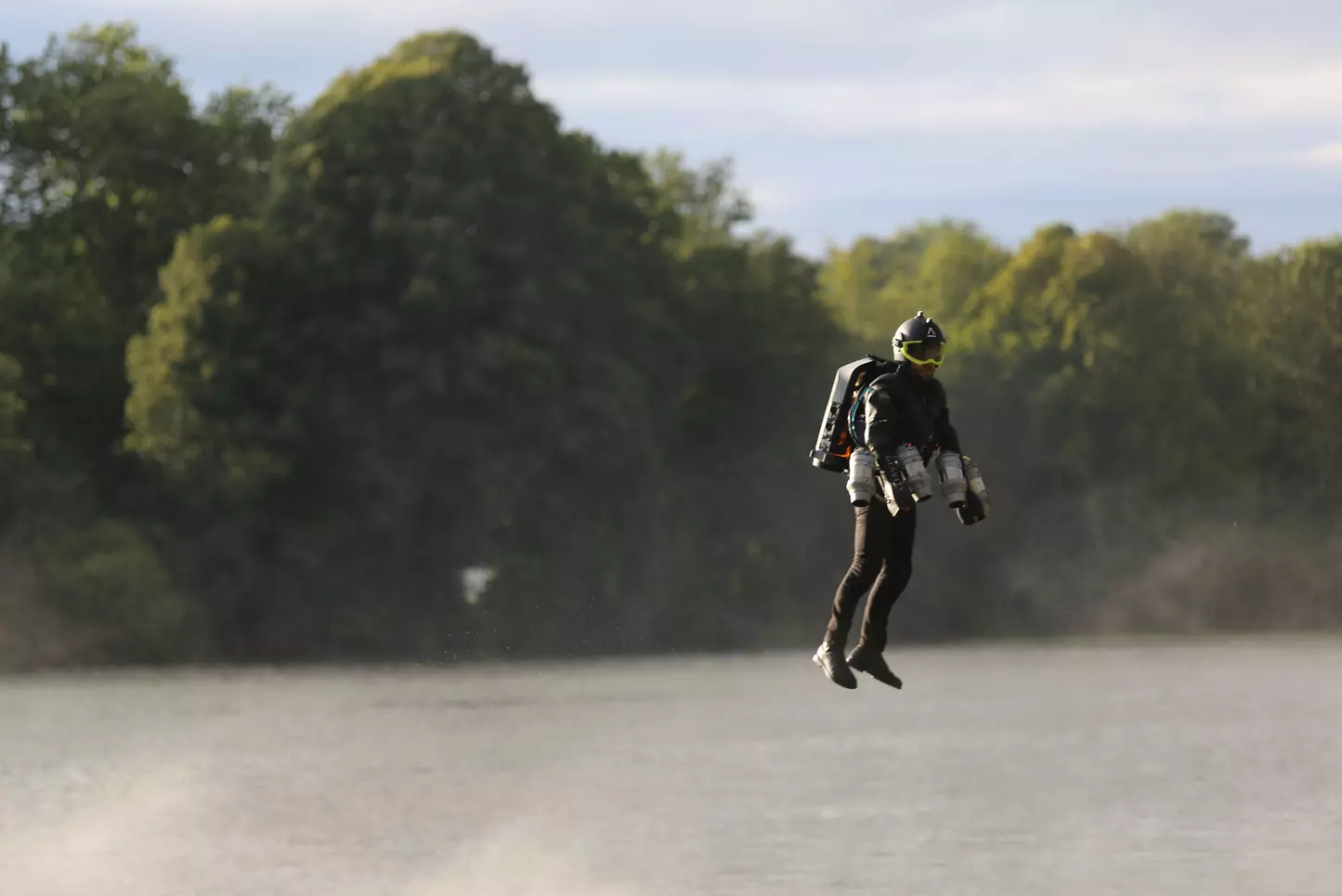Flying is a dream that has filled the pages of mythology and science-fiction movie screens, from Daedalus and Icarus to James Bond. Scholars such as Leonardo da Vinci, with his “flying machine” described in the Codex Atlanticus, committed their genius to “putting wings” on a creature that has no aerodynamic characteristics. Hang-gliders, parachutes and para-gliders allow humans to glide provided they are already at an elevated position, but today the challenge is to develop autonomous individual mobility beyond the limits of the most famous law of physics developed by Isaac Newton.
And “Gravity” is the name of the company that Richard Browning founded in 2017, after creating a Guinness World Record-breaking “Jet Suit”. The British inventor achieved the fastest speed in flight ever (136.8 kilometres per hour) for a man in a “jet suit” in 2019, becoming known as the “real-life Iron Man” because of the similarity of his patented device to the suit-device worn by Tony Stark.
The Jet Suit can technically reach a height of 3,650 metres and can fly for up to ten minutes, covering up to 12.8 kilometres in autonomy. Its design is a wearable evolution of devices such as “jet packs” or “rocket belts.” Russian Alexander Andreev was the first to create a design in 1919, to give soldiers an effective tool to siege enemy fortresses. The device, with metre-long wings, was patented and was supposed to be powered by oxygen and methane, but apparently it was never built or tested.
Post-World War II research focused on engines powered by hydrogen peroxide, a gas that causes an exothermic reaction when it comes in contact with a catalyst. Bell Rocket Belts made models that were used at Disneyland, the 1984 and 1996 Olympics and in the 1965 film “Thunderball”, starring Sean Connery as Agent 007. However, the jetpack could only fly for 30 seconds and after evaluating it for logistical, reconnaissance activities and tactical manoeuvres in the early 1960s, even the US military lost interest in it.
At the same time, the use of turbo-charged paraffin or diesel engines gave new momentum to the research, with greater results only in the last twenty years. In 2008, Yves Rossy's feat caused a sensation. With a jet wing about 2.4 metres long mounted on his back, he flew over the English Channel in 9 minutes and 7 seconds, reaching 300 kilometres per hour. The Swiss aviator, however, had jumped from a plane at an altitude of 2,500 metres, landing with a parachute.
Vince Reffet marked further progress by setting a record for the height reached by taking off from the ground in autonomous flight with a Jetman company aircraft, in Dubai in 2020. In three minutes he reached 1,800 metres, using his parachute to land. Unfortunately, the base jumper perished a few months later in a fatal accident during a training session.
Another Frenchman, Franky Zapata, flew across the English Channel in 2019, thanks to a five-turbine “flying boat”, stopping halfway across for refuelling on a boat. Its Flyboard Air can reach a potential altitude of 3,000 metres, a speed of 200 kilometres per hour and fly for ten minutes. A wearable device in its own way, with shoes attached to the footplate to improve balance.
Based in Ventura, California, Jetpack Aviation is inspired by a much more “classic” design and claims to produce “the world's only jetpack.” In fact, the company founded by Australian David Mayman, drew on the know-how of Nelson Tyler, a former collaborator of Bell Rocket Belt. The JB-10 is used for training, while the JB-11 is more powerful and can reach an altitude of 4,500 metres and a speed of 190 km/h, for ten-minute flights. JB-10 and JB-11 are fuelled by paraffin, diesel or Jet A-1 fuel, and can be purchased on request.
Along these lines, many other inventors have taken on the challenge of human flight, but with his Browning jet suit, he developed the design even further. The Jet Suit generates a thousand horsepower and is driven by the vector thrust directed by the driver, who wears two turbines on each arm and another larger one on the driver’s back, for a total of five. The “Iron Man suit” can fly a total load of 110 kilograms and has been tested for search and rescue operations in the mountains, and in cooperation with the British Royal Navy.
You can learn how to use it at Gravity flight centres in Goodwood (UK) and Camarillo (California). Browning, a former British Petroleum employee for 16 years and a former Royal Marine for another 6 years, comes from a family with an aviation background and said that the Jet Suit project began with the internet purchase of a jet engine one night in March 2016.
Since then, Gravity has obtained a $ 640,000 funding round from venture capitalists Tim and Adam Draper. Regarding an evolution as a means of transport, Browning admitted that “at this stage, Jet Suits are not an efficient means of travel.” However, he recalled that “few saw potential” even in the first cars, so at this time, the choice is to focus on sports entertainment, with an International Race Series and on a few users niches.
“We do not exclude the possibility that an electric, or wing version may become more mainstream as technology rapidly advances,” he added. In fact, Gravity has already developed a rough prototype of an electric jet suit, the first one in the world, made of carbon fibre, aluminium, 3D-printed polypropylene and powered by powerful, fast-charging lithium-polymer batteries. The e-Suit has already been used in public by Sam Rogers, one of the Gravity drivers, at the Future Lab at the Goodwood Festival of Speed in 2021.
